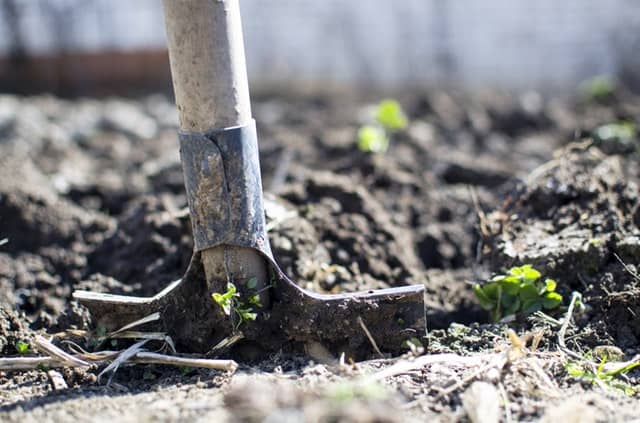We like to imagine that any efforts we make in our outdoor spaces serve to improve the environment — but that isn’t necessarily the case. Your vegetable garden might reduce your reliance on produce shipped from inefficient and detrimental industrial agriculture systems, but unless your garden is carefully tended, you might be wasting more energy and having worse impacts on the environment than those industrialized farms.
Fortunately, it is possible to tend an energy efficient garden. To ensure your outdoor spaces are truly green, here is a nifty checklist for common garden energy consumers:
Planning
The more control you have over your outdoor spaces, the more you can conserve energy and other resources. The most energy efficient gardens are built that way from the beginning, using smart organization and environmental tactics to reduce resource consumption. If you can plan your garden from the ground up, here are some tactics to ensure it stays green.
- Plant more shade trees. Trees that cast plenty of shade can reduce garden temperatures by 6 degrees and indoor temperatures by 25 percent, cutting down your reliance on air conditioning.
- Add shrubs and vines near your exterior walls. As with shade trees, bushes, and vines cast shade over windows, reducing temperatures. Additionally, shrubs near walls create “dead air” that acts as insulation during all seasons.
- Group plants by their water needs. Flora that require abundant watering should be placed in a sheltered area, which will reduce water loss.
- Build a windbreak. By arranging evergreen plants in two staggered rows around your yard, you can prevent winds from damaging your garden and impacting the temperature of your home.
- Use green-scaping techniques. Green-scaping is using regional plants in your garden. Because native flora evolved to live optimally in your climate and soil, they ensure energy efficiency.
- Consider removing your lawn. Grass is beautiful and functional, providing a place to play and relax, but it is easily the most energy-hungry element in your yard. By removing it, you can dramatically cut back your water usage and gain space for other garden activities.
Water
Water is the resource most often abused. We use too much and we pollute the rest — especially in our outdoor spaces. The entire world is rapidly approaching a clean freshwater crisis, when we will run out of accessible, potable water. To delay this eventuality as long as possible — or, even better, prevent it — you should make sure your garden is water-smart in the following ways:
- Water during the early morning. This allows enough water to soak into the ground but prevents your plants from sitting in puddles overnight.
- Observe your sprinkler paths. You don’t want to waste water by allowing spray to travel onto sidewalks or the street.
- Revise your watering strategy. Instead of going shallow — with short but frequent watering — you should go deep with a few long soaks. To do this, you might replace your sprinkler system with irrigation.
- Collect rainwater in barrels. Rainwater tends to be better for plants than water straight from the tap. You can use the barrels to water indoor and outdoor container plants.
- Look for leaks. Your faucets hoses, sprinkler heads, and more should only release water when you want them to.
- Cover your soil. Mulch or living ground coverings not only prevent soil from drying out, but they can add vital nutrients to the soil and thwart the germination of water-stealing weeds.
Consider a greywater system. Greywater systems recycle wastewater from sinks and showers (everything besides the toilet) for outdoor use. They require a significant initial investment, but they will help conserve water in the long term.
Greenhouses
There are dozens of ways to do greenhouse gardening wrong. While greenhouses do provide an optimal growing environment year-round, they can be extremely energy hungry, and it is easy to be wasteful. To tend an energy-efficient greenhouse, you must start with the right greenhouse kit, which should suit both the size and shape of your gardening needs as well as provide the features that help you stay green. Here are a few tips to help you do greenhouse gardening correctly:
- Place your greenhouse in a sheltered spot. Greenhouses provide shelter, but they benefit from walls and trees surrounding them. Extra shelter reduces wind, and wind is bad for greenhouse gardening.
- Reduce air leaks. Air leaks change the interior temperature of the greenhouse, forcing you to rely on energy-consuming heating and cooling units. By sealing windows and doors and installing double coverings, you can create a more stable temperature.
- Optimize your space usage. The more growing space in your greenhouse, the better. You should consider installing multi-level racks, hanging pots and more to fill your greenhouse with life.
- Think about your greenhouse shape. Structures with less surface area are less affected by outside conditions and allow less heat to escape. Hemispheres — half-circles — are ideal, but cubes win a close second place for most energy-efficient shape.
- Orient your greenhouse north to south. By facing the length of your greenhouse to the east and west, you maximize the sunlight shining into the space.
- Consider automating your greenhouse. Smart greenhouses use sensors to detect when to turn on heating and cooling systems, open and close windows, begin watering, and more. Though they do use energy, their enhanced level of care ensures the healthiest possible garden with the least possible waste.
- Consider using recycled materials in greenhouse construction. Depending on your greenhouse kit, you might not have the opportunity — but if you can choose between recycled and non-recycled building materials, you should always pick the former.
Yard Maintenance
It’s hard to imagine that you could possibly be mowing your lawn, pruning your hedges, and picking up debris incorrectly, but in truth, improper lawn maintenance typically results in increased energy needs for your garden. By paying attention to how you tend your yard, you can reduce your garden’s energy impact. You should check your gardening habits against these rules:
- Use manual tools whenever possible. Motorized tools are fun and fast, but their reliance on gasoline isn’t healthy for the environment. Manual tools give you more control while reducing energy consumption and protecting air quality.
- Attract friendly fauna. Some creatures are undeniably destructive, but others are patently beneficial. You should make your garden a welcoming place to birds — which will hunt snails, slugs, caterpillars, etc. — as well as good insects like ladybugs, lacewings, and ground beetles.
- Change mower height by season. In the summer, you should let your lawn grow a bit taller, which gives the roots more shade and chokes out weeds. In the fall, you might want to mow closer to the ground, which prevents compaction during winter hibernation.
- Pinch shrub stem tips. Plants grow more efficiently if you strategically guide their growth with pinching
- Make specific pruning cuts. When clipping your plants, you should make cuts just above nodes, otherwise known as branches and leaves. This encourages rapid healing and reduces likelihood of infection, which could kill your plant.
- Consider composting. Any organic matter — from kitchen scraps, excluding animal parts, to yard debris like leaves and wood chips — can be saved from the landfill and used as compost that helps your garden grow. All you need is an extra-large container, a thin layer of garden soil, and compostable waste.







